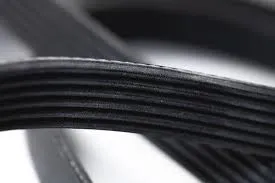- Arabic
- French
- Russian
- Spanish
- Portuguese
- Turkish
- Armenian
- English
- Albanian
- Amharic
- Azerbaijani
- Basque
- Belarusian
- Bengali
- Bosnian
- Bulgarian
- Catalan
- Cebuano
- Corsican
- Croatian
- Czech
- Danish
- Dutch
- Afrikaans
- Esperanto
- Estonian
- Finnish
- Frisian
- Galician
- Georgian
- German
- Greek
- Gujarati
- Haitian Creole
- hausa
- hawaiian
- Hebrew
- Hindi
- Miao
- Hungarian
- Icelandic
- igbo
- Indonesian
- irish
- Italian
- Japanese
- Javanese
- Kannada
- kazakh
- Khmer
- Rwandese
- Korean
- Kurdish
- Kyrgyz
- Lao
- Latin
- Latvian
- Lithuanian
- Luxembourgish
- Macedonian
- Malgashi
- Malay
- Malayalam
- Maltese
- Maori
- Marathi
- Mongolian
- Myanmar
- Nepali
- Norwegian
- Norwegian
- Occitan
- Pashto
- Persian
- Polish
- Punjabi
- Romanian
- Samoan
- Scottish Gaelic
- Serbian
- Sesotho
- Shona
- Sindhi
- Sinhala
- Slovak
- Slovenian
- Somali
- Sundanese
- Swahili
- Swedish
- Tagalog
- Tajik
- Tamil
- Tatar
- Telugu
- Thai
- Turkmen
- Ukrainian
- Urdu
- Uighur
- Uzbek
- Vietnamese
- Welsh
- Bantu
- Yiddish
- Yoruba
- Zulu
ਨਵੰ. . 10, 2024 10:45 Back to list
Understanding the Basics of Power Transmission Belts in Mechanical Systems
Understanding Power Transmission Belts Essential Components for Mechanical Efficiency
Power transmission belts are crucial elements in mechanical systems, designed to transfer power between moving components efficiently. These belts are widely used in various applications, including automotive engines, industrial machinery, and household appliances. Understanding the types, functions, and advantages of power transmission belts can provide insights into their role in enhancing mechanical performance.
Types of Power Transmission Belts
There are several types of power transmission belts, each tailored for specific applications. The most common types include
1. V-Belts These are wedge-shaped belts that fit into a groove on the pulley, offering excellent grip and power transmission. V-belts are favored for their flexibility and ability to operate at high speeds. They can be found in applications ranging from lawnmowers to industrial machines.
2. Flat Belts Unlike V-belts, flat belts have a rectangular cross-section. They are often used in applications requiring power transmission over longer distances. Such belts are typically applied in conveyor systems and textile machinery, where they can be operated at lower speeds.
3. Timing Belts Featuring teeth along their inner surface, timing belts provide precise movement and synchronization between rotating shafts. They are essential in applications such as automotive timing systems and high-precision machinery, where accurate timing is crucial.
4. Toothed Belts Similar to timing belts, toothed belts also have teeth, but they can transmit power without a specific timing relationship. They are utilized in various mechanical systems where a positive engagement is necessary.
5. Poly V-Belts These belts have multiple ribs running parallel, allowing for better flexibility and reduced slippage. They are commonly used in compact machinery where space is limited.
The Functions of Power Transmission Belts
Power transmission belts serve several critical functions
power transmission belts

- Power Transfer The primary function of these belts is to transfer mechanical energy from one component to another. This is essential for the operation of many machines, enabling movement and functionality.
- Speed and Torque Adjustment By selecting different pulley sizes, power transmission belts can adjust the speed and torque delivered to a machine
. This variability is vital for optimizing performance across various operating conditions.- Reduced Noise and Vibration High-quality power transmission belts can help minimize noise and vibration in mechanical systems, leading to a smoother operation and extending the lifespan of machinery.
Advantages of Using Power Transmission Belts
The use of power transmission belts offers numerous advantages, including
1. Cost-Effectiveness Compared to other power transmission methods such as gears and chains, belts are relatively inexpensive to manufacture and replace.
2. Simplicity and Ease of Installation Power transmission belts can be easily installed and maintained, facilitating quicker repairs and reduced downtime in industrial operations.
3. Durability and Reliability High-quality belts are designed to withstand wear and tear, providing reliable performance over extended periods. They can operate efficiently under varying temperatures and environmental conditions.
4. Flexibility in Design Power transmission belts can be adapted to various configurations and distances, making them suitable for diverse applications in different industries.
Conclusion
Power transmission belts play an indispensable role in modern machinery and equipment. Their ability to efficiently transfer power, while offering flexibility in design and cost-effectiveness, makes them a preferred choice in various applications. As industries continue to evolve, the development of advanced materials and technologies will further enhance the efficiency and performance of power transmission belts, ensuring their relevance in the future of mechanical engineering. Understanding these components can lead to better maintenance practices and optimize the operation of machines, keeping them running smoothly and effectively.
-
Durable Tooth Belts: Precision Power for Poly V Belt Drives
NewsAug.08,2025
-
Reliable Diesel Engine Belts & Tensioners for Optimal Performance
NewsAug.07,2025
-
23100-KVB-901 Drive Belt for Honda VARIO | OEM Performance
NewsAug.06,2025
-
Variable Belt Drive AI Optimized for Efficiency
NewsAug.05,2025
-
High-Quality Tensioner Belt Pulley - Durable & Efficient
NewsAug.03,2025
-
Premium Timing Belt Factory | AI-Optimized Solutions
NewsAug.02,2025

